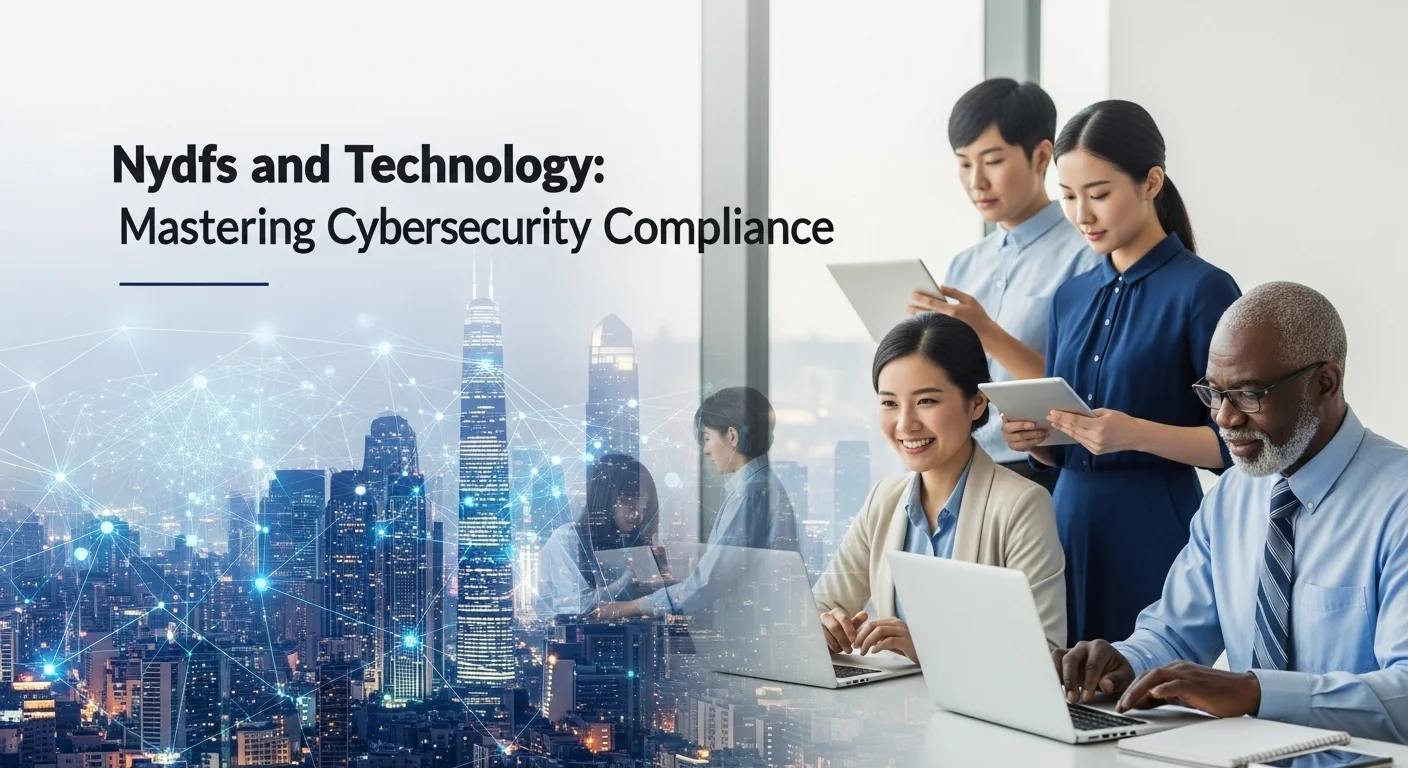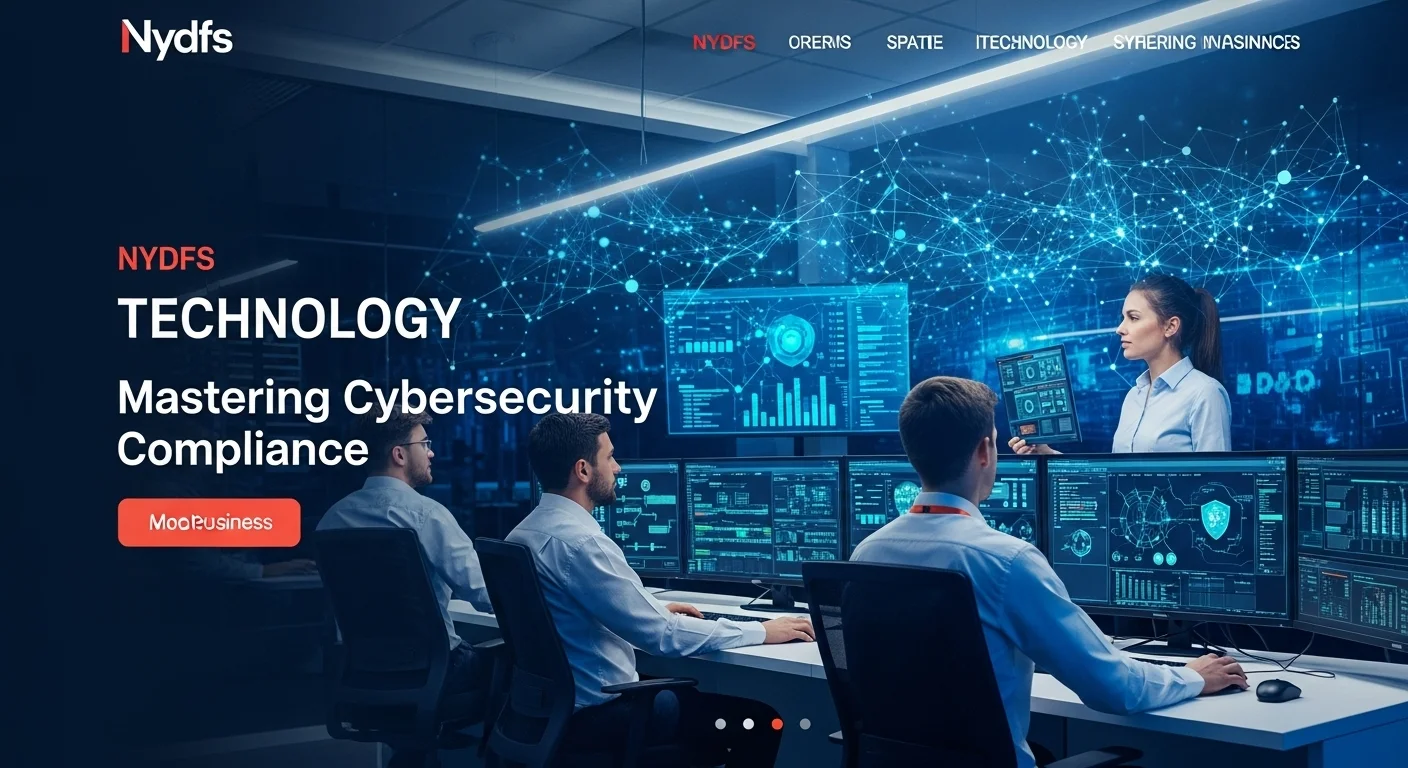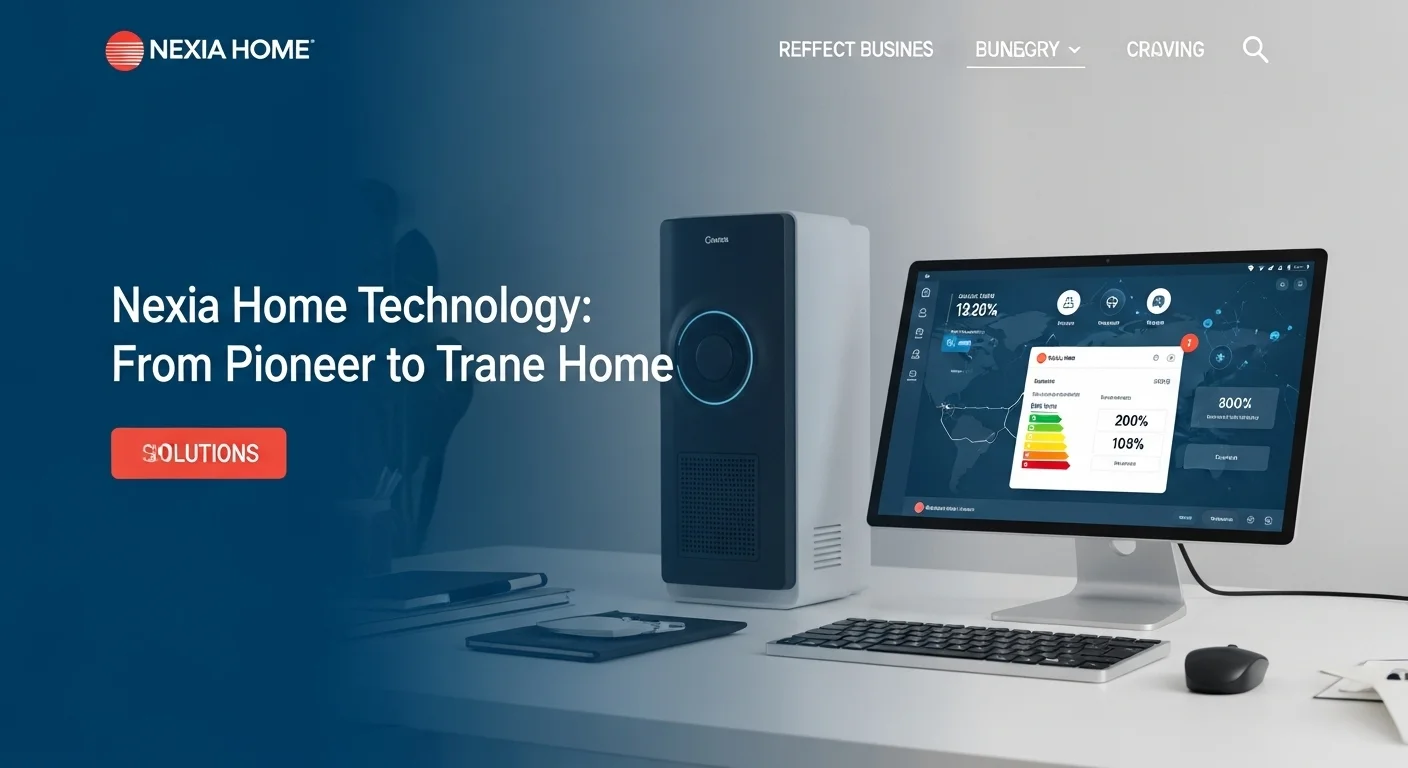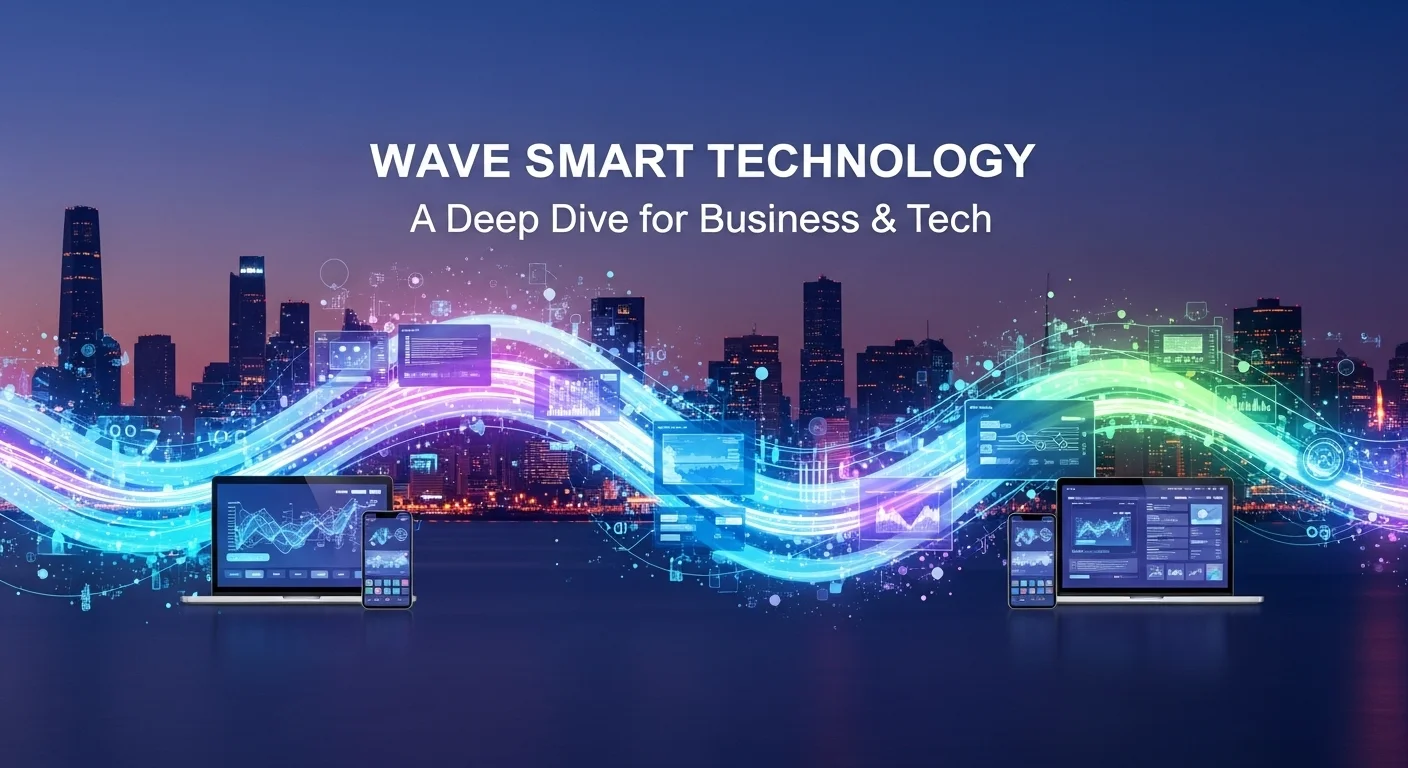NYDFS Explained: A Practical Guide to Mastering Cybersecurity Compliance

Executive Summary
In my years working in cybersecurity, I've seen countless businesses treat regulations as just another box to check. But when the New York State Department of Financial Services (NYDFS) rolled out its cybersecurity rule, formally known as 23 NYCRR Part 500, it was a different ball game. This isn't just another piece of red tape. NYDFS is a foundational mandate that forces companies in the financial sector, and many who service it, to take a hard, honest look at how they use technology to guard sensitive information. For anyone in business or tech, getting your head around the NYDFS regulation is non-negotiable. It demands a proactive, risk-aware strategy, pushing organizations to build real defenses—from solid data encryption and access controls to a plan for when things go wrong. In this article, I'll share my hands-on experience, breaking down the core principles of the NYDFS framework. We'll explore the tech it demands, the strategies for getting compliant, and how this 'burden' can actually become one of your greatest strategic assets, building trust and resilience in a world full of digital threats.
Table of Contents
Table of Contents
- What is NYDFS, Really? More Than Just an Acronym
- The Core Pillars of the NYDFS Mandate
- Why This Regulation is a Game-Changer for Your Business
What is NYDFS, Really? More Than Just an Acronym
Let's clear something up right away. Whenever I talk to tech leaders about this topic, the first question is often, 'What software is NYDFS?' It’s a common mix-up. NYDFS isn't a tool or a platform; it stands for the New York State Department of Financial Services. Its huge impact on the technology world comes from a single, powerful piece of legislation it created: the Cybersecurity Regulation, or 23 NYCRR 500. This rule completely changed the game for how financial services companies handle digital security. Frankly, if your business touches the financial industry in any way, understanding the ins and outs of New York's cybersecurity rules is essential for survival.
The Birth of a Landmark Regulation: 23 NYCRR 500
So, why did this regulation come about? Think back to the mid-2010s. Financial institutions were moving everything online, from core banking to client records, making them a massive target for cybercriminals. I remember the constant news cycle of breaches. The state of New York recognized that a major cyberattack could cripple not just a single bank, but the entire financial system. So, in 2017, NYDFS acted. They introduced 23 NYCRR 500 to force covered companies to build and maintain a real, functioning cybersecurity program. The goal was simple but revolutionary: shift the industry from a reactive 'clean up the mess' posture to a proactive 'prevent the mess' one. This set a new gold standard for compliance and sent ripples across the country.
The Core Pillars of the NYDFS Mandate
This regulation isn't about vague suggestions. It's a detailed blueprint with specific, actionable requirements that are deeply woven into a company's technology. Getting compliant means taking a holistic approach that touches every part of your IT strategy. Here are the pillars I always tell my clients to focus on first:
1. Build a Real Cybersecurity Program
At its heart, the rule says you must create and maintain a comprehensive cybersecurity program. This isn't just an IT project; it's a core business function. Your program needs to be able to identify cyber risks, protect your systems, detect threats, respond to incidents, and recover your operations. This forces you to invest in a suite of technologies, from firewalls and intrusion detection systems to reliable data backup and recovery solutions. It’s a living, breathing part of the business that must be constantly reassessed and improved.
2. Appoint a Chief Information Security Officer (CISO)
The regulation requires you to designate a CISO. This person is on the hook for implementing and enforcing your security program. I've seen this role transform businesses. It elevates security from a basement-level IT function to a C-suite conversation, as the CISO must report directly to the board or senior leadership. Whether in-house or a third-party expert, their job is to ensure technology strategy and business security are perfectly aligned.
3. Have a Written Cybersecurity Policy
You need a formal, written policy that lays out the rules for protecting your systems and data. This document, which needs to be approved by the board or a senior officer, is the master plan for your entire security effort. It covers everything from how you classify data to who can access it and what happens in an emergency. Technology is key here, as you'll rely on automated tools to enforce these policies, manage access rights, and flag violations.
4. Conduct Regular Risk Assessments
This is the cornerstone of the whole regulation. You are required to perform periodic, thorough risk assessments tailored to your specific business—your technology, your data, your operations. This is not a one-and-done audit. I advise my clients to see it as a continuous health check that adapts as new threats emerge. It requires tools like vulnerability scanners and penetration testing to find weak spots before attackers do. The results of these assessments should directly shape your security program's priorities.
5. Implement Key Technical Security Controls
This is where the rubber meets the road, technologically speaking. Part 500 mandates specific technical safeguards:
- Access Controls & Identity Management: You have to lock things down. Limit access to sensitive data to only those who absolutely need it. This means enforcing the 'principle of least privilege,' having strong password rules, and, crucially, using multi-factor authentication (MFA). MFA is a must for any remote access to your network, adding a critical security layer that has stopped countless attacks I've seen over the years.
- Encryption: The rule is clear: encrypt sensitive 'nonpublic information' everywhere. That means when it's traveling across the internet (in transit) and when it's sitting on your servers (at rest). This is a major investment in encryption technology and key management, but it's your best defense. If data is stolen, encryption ensures it's just gibberish to the thieves.
- Audit Trails: You must keep detailed logs of what's happening on your network. These records need to be good enough to reconstruct financial transactions and investigate a security breach. This is where tools like Security Information and Event Management (SIEM) systems come in. They are the security cameras for your digital world, helping you spot trouble in real-time.
6. Have an Incident Response Plan (IRP)
It’s not a question of *if* you'll face a security incident, but *when*. NYDFS requires you to have a written plan for that day. Your IRP details exactly how you will respond and recover. A critical piece is the 72-hour notification rule: you must report significant events to the NYDFS within 72 hours of discovery. I can't stress this enough—that deadline is tight. It requires well-rehearsed procedures and efficient technology to detect and report an incident quickly.
Why This Regulation is a Game-Changer for Your Business
The influence of the NYDFS cybersecurity regulation has spread far beyond New York, becoming a benchmark for the entire country. For tech leaders, it provides a clear, if demanding, roadmap for building a secure organization. Yes, the costs of compliance can be high, but the payoff is immense. It forces a disciplined approach, pushing companies to ditch outdated systems and adopt modern security solutions. It transforms cybersecurity from a cost center into a business advantage. In my experience, companies that embrace these practices don't just avoid fines; they earn customer trust, protect their reputation, and gain a real edge in a world where digital security is everything.

Your Step-by-Step Playbook for NYDFS Compliance
Navigating the New York State Department of Financial Services (NYDFS) Cybersecurity Regulation, or 23 NYCRR 500, can feel overwhelming. I've worked with many companies to turn this complex set of rules into a practical, step-by-step plan. The key is to see it not just as a compliance hurdle, but as a blueprint for building a truly resilient organization. This guide is my playbook for integrating technology, policy, and business operations into a single, strong defense.
Building Your Program: A Phased Technical Approach
You don't have to reinvent the wheel. The regulation's DNA is closely linked to established frameworks like the NIST Cybersecurity Framework. Using a recognized structure like NIST provides a clear path forward.
Step 1: Know What You're Protecting (Identify & Assess)
This is your foundation. As the old saying goes, 'you can't protect what you don't know you have.' This phase is all about discovery.
- Asset Inventory: Your first job is to create a complete map of your technology landscape. This means every server, laptop, application, and, most importantly, every place you store, send, or process sensitive nonpublic information (NPI). Automated discovery tools and a good Configuration Management Database (CMDB) are your best friends here.
- Vulnerability Scanning & Penetration Testing: Section 500.05 requires you to actively look for weaknesses. I recommend setting up automated vulnerability scans (using tools like Nessus or Qualys) to run continuously. On top of that, you need an annual penetration test—an ethical hack—where experts simulate a real-world attack to see if your defenses hold up. This is where you find the cracks before the bad guys do.
- Risk Analysis: Once you know your assets and your weaknesses, you can connect the dots. Analyze the potential business impact if a system were to be breached. This allows you to prioritize. You can't fix everything at once, so focus your resources on the biggest risks to your business first.
Step 2: Building Your Digital Fortress (Protect & Defend)
Now it's time to build your defenses. This is the most technology-heavy part of achieving compliance.
- Identity and Access Management (IAM): This is about making sure the right people have access to the right things, and no one else. Implement the 'principle of least privilege'—if an employee doesn't absolutely need access to a system for their job, they don't get it. For powerful admin accounts, the controls need to be even stricter.
- Multi-Factor Authentication (MFA): I consider this non-negotiable in modern security. Section 500.12 mandates it for remote access, and for good reason. A stolen password is useless to an attacker if they also need a code from the user's phone. Modern MFA can even adapt based on risk, making it secure without being annoying for your users.
- Data Encryption: As required by Section 500.15, you must encrypt NPI both in transit (using protocols like TLS) and at rest (using disk, database, or file-level encryption). Just as important is having a solid plan for managing your encryption keys. A lost key is just as bad as a data breach.
- Microsegmentation: Think of this as putting digital blast doors inside your network. In the old days, a tough firewall was enough. Not anymore. Microsegmentation breaks your network into small, isolated zones. If an attacker breaches one area, the blast doors contain the damage, preventing them from moving laterally to other critical systems.
Step 3: When Alarms Ring (Detect, Respond & Recover)
Even the best fortress needs watchmen on the walls and a plan for when an attack gets through.
- Security Information and Event Management (SIEM): A SIEM tool is essential for meeting the audit trail requirements. It pulls in log data from all over your network—firewalls, servers, applications—and uses smart analytics to spot suspicious activity. It's the central nervous system of your security operations center.
- Endpoint Detection and Response (EDR): Antivirus is a thing of the past. EDR solutions constantly monitor laptops and servers for advanced threats that traditional tools miss. For certain 'Class A' companies, the amended regulation now explicitly requires EDR.
- An Actionable Incident Response Plan (IRP): Your IRP needs to be a clear, step-by-step guide that anyone can follow in a crisis. Modern tools like Security Orchestration, Automation, and Response (SOAR) platforms can be a huge help here. They can automate initial response actions, like isolating a compromised machine, which helps you move faster and meet that critical 72-hour NYDFS notification deadline.
- Business Continuity and Disaster Recovery (BCDR): You need to test your recovery plan regularly. This means having secure, isolated backups and a documented process to bring your critical systems back online after a major incident.
Business Solutions and Resources for Your Journey
This isn't just a tech problem; it's a business challenge that requires smart investments.
- Governance, Risk, and Compliance (GRC) Platforms: These tools are lifesavers. They help you map your security controls directly to the NYDFS requirements, manage your policies, track remediation tasks, and generate reports for leadership and auditors. They create a single source of truth for your entire compliance program.
- Third-Party Risk Management (TPRM) Tools: The regulation holds you responsible for the security of your vendors. TPRM platforms automate the painful process of vetting your partners, sending security questionnaires, and monitoring their risk profile. A breach through a vendor is still your breach.
- The Cloud and Shared Responsibility: Cloud providers like AWS, Azure, and Google Cloud offer powerful security tools that can help you meet NYDFS requirements. But remember the shared responsibility model: they secure the cloud infrastructure, but you are responsible for securing what you put *in* the cloud. Proper configuration is everything.
- Managed Security Service Providers (MSSPs) & Virtual CISOs (vCISOs): If you're a smaller organization, partnering with an MSSP can give you access to 24/7 security monitoring and expertise you couldn't afford in-house. A vCISO service is also a great way to meet the CISO requirement without hiring a full-time executive.
How NYDFS Stacks Up
It's useful to see how NYDFS compares to other rules like GDPR. While GDPR is primarily about data privacy, the NYDFS regulation is more focused on the operational security and resilience of the financial system. It's more prescriptive about specific technical controls. The good news? If you're already compliant with frameworks like ISO 27001 or PCI DSS, you have a significant head start, as many of the controls overlap. By using the right tools and strategies, you can transform this regulation from a mandate into a mature, proactive security program that protects your business from top to bottom.

Beyond the Checklist: Advanced NYDFS Strategies for True Cyber Resilience
Getting compliant with the NYDFS Cybersecurity Regulation is the first major milestone. But in my experience, the companies that truly thrive are the ones that see compliance not as a finish line, but as a starting point. The threat landscape is constantly changing, and your defenses must evolve with it. Here are some of the advanced strategies and tools I recommend to clients who want to move beyond just checking boxes and build a genuinely resilient security culture.
Best Practices for a Mature Security Program
A mature program isn't just about following the rules; it's about embracing the spirit behind them. It’s about weaving security into the very fabric of your organization.
1. Cultivate a Human Firewall: Beyond Basic Training
The regulation requires security training, but a yearly PowerPoint presentation just doesn't cut it anymore. Your people are your first line of defense, but they can also be your biggest vulnerability.
- Make Training Continuous: Supplement formal training with regular, simulated phishing attacks. These safe, controlled tests give employees hands-on practice spotting malicious emails. Use the results not to punish, but to provide extra coaching to those who need it most.
- Make Training Relevant: Your developers need to know about secure coding, while your finance team needs to be experts at spotting fraudulent wire transfer requests. Tailor your training to the specific risks each department faces. Generic training is ignored training.
- Foster a 'No-Blame' Culture: You want employees to raise their hand the second they see something suspicious, without fear of getting in trouble. I've seen a prompt, early report from a vigilant employee stop a major breach in its tracks. An empowered workforce is a powerful security asset.
2. Embrace a 'Never Trust' Mindset: The Zero Trust Advantage
The old 'castle-and-moat' model of security—a hard outer shell protecting a trusted internal network—is dead. A Zero Trust architecture works on a simple, powerful principle: 'never trust, always verify.' No user or device is trusted by default, period.
- Use Microsegmentation: As I mentioned before, this is a core tactic of Zero Trust. By creating those digital blast doors, you severely limit an attacker's ability to move around your network if they do get in.
- Focus on Identity: Zero Trust shifts the security perimeter from the network to the individual user and device. Every single request to access data is challenged and must be authenticated and authorized. This aligns perfectly with the strict access control requirements of the NYDFS regulation and makes your security far more granular and effective.
3. From Defense to Offense: Proactive Threat Hunting
Compliance requires you to detect incidents. Resilience requires you to find attackers *before* they can cause an incident. It's time to go on the offensive.
- Leverage Threat Intelligence: Subscribe to high-quality threat intelligence feeds that give you real-time data on new attack methods and malicious actors. Integrating these feeds into your security tools automates your defenses against the latest known threats.
- Start Hunting: Threat hunting is the practice of actively searching your own network for signs of a hidden compromise that your automated tools might have missed. A skilled hunter, whether internal or from a service provider, thinks like an attacker and looks for the subtle clues they leave behind. This is how you find the most sophisticated threats.
4. Make Your Incident Response Plan Battle-Ready
An Incident Response Plan (IRP) that just sits on a shelf is useless. The NYDFS rule requires a plan, but a mature organization makes sure that plan works under extreme pressure.
- Run Drills (Tabletop Exercises): Get your key players—from IT, legal, PR, and the executive team—in a room and walk them through a simulated crisis, like a ransomware attack. These exercises reveal gaps in your plan and build the muscle memory needed to respond effectively when it's real.
- Automate Your Response: Use Security Orchestration, Automation, and Response (SOAR) platforms to handle the initial, repetitive tasks of incident response. This frees up your human experts to focus on the complex investigation, ensuring you can respond faster and more consistently.
Tools and Tech to Streamline Your NYDFS Journey
The right technology can turn the ongoing burden of compliance into a streamlined, automated process.
- GRC Platforms: Tools like SureShield, Hyperproof, or OneTrust are built for this. They provide NYDFS templates, automate the collection of evidence for audits, and give leadership a clear dashboard showing your compliance status at all times. They create a single source of truth for your entire compliance program.
- Security Posture Management: Solutions from companies like Forescout or Zero Networks can automate the enforcement of your security policies. They give you total visibility of every device on your network and can automatically apply access controls, helping you implement things like microsegmentation with far less manual work.
- Cloud-Native Security: If you're in the cloud, use the tools your provider gives you. AWS GuardDuty, Azure Sentinel, and Google's Security Command Center are incredibly powerful because they are built directly into the cloud fabric, offering a level of insight that's hard to match.
- AI in Cybersecurity: This is the future of defense. AI-powered security tools can sift through mountains of data to find complex attack patterns that are invisible to human analysts. Investing in platforms with strong AI capabilities is a key strategy for staying ahead of attackers.
My Most Valuable External Resource
If there's one link you should bookmark on this topic, make it the official source. The New York State Department of Financial Services maintains a webpage with the full text of the regulation, all amendments, and detailed FAQs. I refer to it constantly to clarify requirements and understand the regulator's intent. For any CISO or compliance officer, this is the ground truth. You can find it by searching for the 'NYDFS Cybersecurity Resource Center' on their official site. It's an invaluable guide on your journey to mastering this framework.
Expert Reviews & Testimonials
Sarah Johnson, Business Owner ⭐⭐⭐
The information about Nydfs is correct but I think they could add more practical examples for business owners like us.
Mike Chen, IT Consultant ⭐⭐⭐⭐
Useful article about Nydfs. It helped me better understand the topic, although some concepts could be explained more simply.
Emma Davis, Tech Expert ⭐⭐⭐⭐⭐
Excellent article! Very comprehensive on Nydfs. It helped me a lot for my specialization and I understood everything perfectly.



